Documenting and incorporating the children's voices for baby and toddler groups into early childhood programs and environments when they are not yet speaking can be a challenge for early childhood educators but we just need to approach this type of reflection and documentation a little differently!
In Part 3 of this blog series - Planning & Play for Babies & Toddlers I'm sharing with you some simple tips and strategies for setting up engaging learning environments, seeking and using baby and toddler voices in your planning and how you can now close the planning cycle loop without needing to write pages and pages!
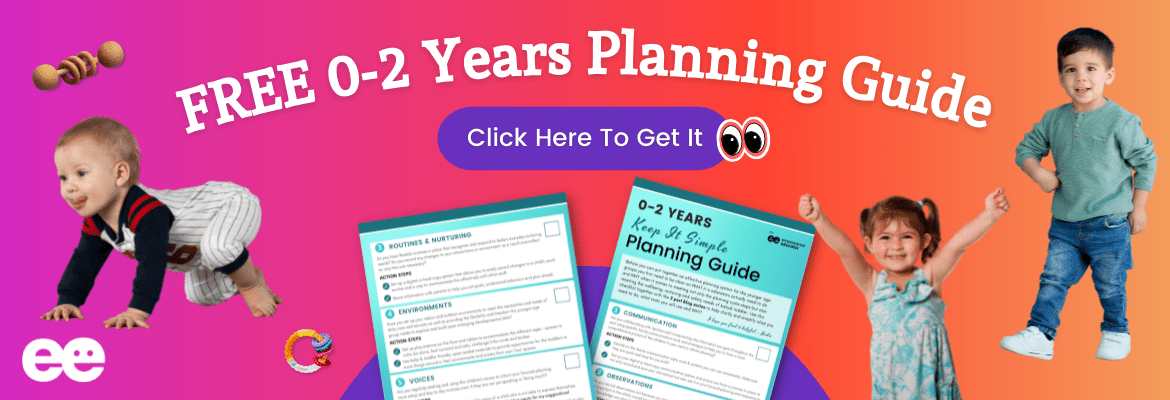
What does this Baby/Toddler Planning & Play Series Cover?
The WHAT. The WHY. The HOW
This first post in the series shares with you WHAT it is we actually need to do as early childhood educators working with Babies & Toddlers, WHY we need to do this when it comes to meeting not only the planning cycle steps but also meeting the wellbeing, nurturing and safety needs of a child 0-2 years in care. And finally, a brief introduction into HOW we are going to make it happen!
How to Observe & Tools to Use
You will find out WHY recording the learning, meaningful moments and progress of a baby or toddler needs a different approach. We'll explore WHAT you can observe and HOW to use different observation formats and tools effectively.
Learning Environments, Voices & looking Forward
We finish the series with part 3 and it is in this post that you will find out how to create and support learning in Baby & Toddler environments, seek out , incorporate & use the child's voice in your planning (even when they are non verbal!) , empower and support educators working with this age group and end with some strategies for closing the planning cycle loop and taking some simple action steps to help get you moving forward!
Ready to get started on Part 3 of this series? Let's Do It Empowered Ed!
Planning & Play for 0-2 Years - Part 3 - Children's Voices
In Part 2 of this blog series I gave you tips to help connect the WHY, WHAT & HOW of child observations and assessment and better understand how meaningful observations inform your forward planning, environment setup and day to day routines with baby and toddler.
In Part 3 we are going to build on that information and explore some ways to include the children's voices in your observations & day to day planning, support ongoing learning in a baby/toddler environment and also empower educators to observe and document babies and toddlers with confidence.
Strategies to Support Ongoing Learning in 0-2 Years Spaces
We know as early years educators that babies and toddlers tend to learn and adapt best in environments where they can form secure, trusting relationships with caring and responsive adults, where they always feel safe and a sense of belonging. It can be challenging to work with and plan for this age group as they require close supervision, positive guidance and stimulating experiences while they feel their way through a period of very rapid growth and change.
However, a well thought out and set up room can actually make things easier from the start for you by incorporating both the necessities and needs of daily care and security as well as providing the flexibility and freedom this age group needs to explore and build upon emerging developmental skills.
So how can you ensure your baby or toddler environment is offering everyday opportunities for learning, without requiring you to move everything or buy new fancy 'educational' materials? Keep it simple and start with the following ideas:
Environment Strategies to Support Early Learning
Create interesting sensory environments to invite investigation and discovery.
Develop clear but flexible routines based on a collaborative approach and partnership with parents & carers. Remember that visual routines work well for the younger age groups!
Ensure baby and toddler have everyday access to open-ended materials and the opportunity to move things around in their environments to create 'new' spaces and experiences..
Set up play stations on the floor and tables to accommodate the different ages, spaces to calm, be alone, feel nurtured and safe.
Provide opportunities for little bodies and minds to feel challenged and begin to manage their own risk.
“Focus on WHO baby or toddler is & what you know, rather than looking for what they might NOT yet be able to do.”
- The Empowered Educator
For more detailed information about setting up and designing learning spaces for baby and toddler age groups read this blog post. You'll also find lots of photo inspiration of real environments from other early years educators!
In Part 2 I encouraged you not to 'overthink' the moments you choose to record as your child observations - this will make it easier for you to analyse the learning from that observation when you use it together with what you already know and understand about that child already. However, I am often asked by educators how they can analyse on what an observation means if it is not what they would consider a huge 'wow' moment or significant new skill so let's touch on some strategies below to help answer this question!
How educators can analyse learning from 'everyday' observations and moments.
Completing the planning cycle and programming to include learning outcomes in the 0-2 years age groups can be a source of frustration and confusion for educators in both family day care and centre based environments.
With that in mind; if you are a leader, mentor, director, coordinator, administrator or manager of educators working with this age group it's important to find ways to empower educators to observe and document babies and toddlers with confidence. You might need to think outside the box a little and also keep in mind that we all learn differently as adults so try a few different strategies!


“Show the HOW & WHY and demonstrate clearly using real examples & inspiration rather than just 'telling'..”
The Empowered Educator

How can Leaders empower Educators to confidently plan for 0-2 years?
01 Create the Time
Give your educator's programming time away from the floor. Family Day Care Educators don’t have that option or anyone to step in for them obviously, but think about the different ways you could record observations involving babies while visiting as a coordinator and engaging in activities with the children.
02 Use Real Examples
Show the HOW & WHY and demonstrate clearly using real examples & inspiration rather than just 'telling'.
03 Tailor Personal Systems
Develop a system that suits individual strengths, styles and service requirements. Try not to just rely on one particular app or form that is meant to encompass ‘all things’ – especially if there hasn’t been any training or ongoing support around how you want this system to be used effectively!
04 Make it a Habit
Encourage educators to get into the habit of asking themselves What, Why and How then share visual examples to help (Remember that we all learn in different ways at different paces – just like children, so yes, you might need to explain or go through examples a few times before it connects!) Laminate a small card with the following questions for those educators not as confident in analysing observations yet as a prompt >> What have you just observed? Why was it important? How has it improved your knowledge of self or the child?
05 Provide a Prompt
If educators are telling you they can’t find anything to observe give them a particular outcome or developmental area to focus on. Sometimes we just need an easier place to help us get started!
06 Rewrite & Redo Together
Set up time off the floor without the demands of the children and routines (or in your set mentoring session time) then together you can rewrite some older observations and redo the analysis. Show how and why you are writing or recording the information in that way, then give out case studies to practice with and improve
confidence.
07 Empower Regularly
Empower educators when you can and when it comes to professional development and the planning cycle - it doesn't always need to be something they are lacking
skills in! if you are not sure how to mentor or empower other educators you will find this Leader Mentor Guide & Checklist useful.
What else could support planning and documenting for 0-2 years?
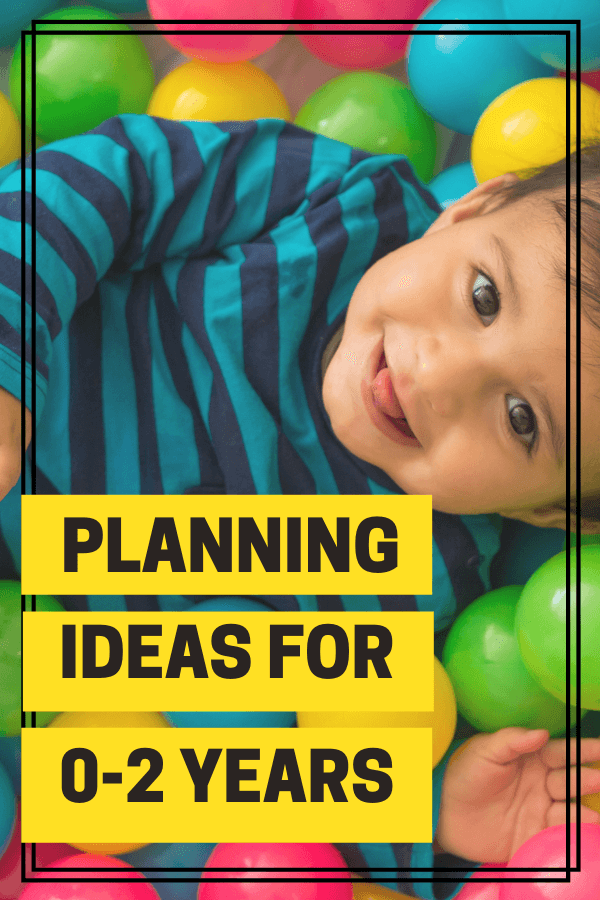
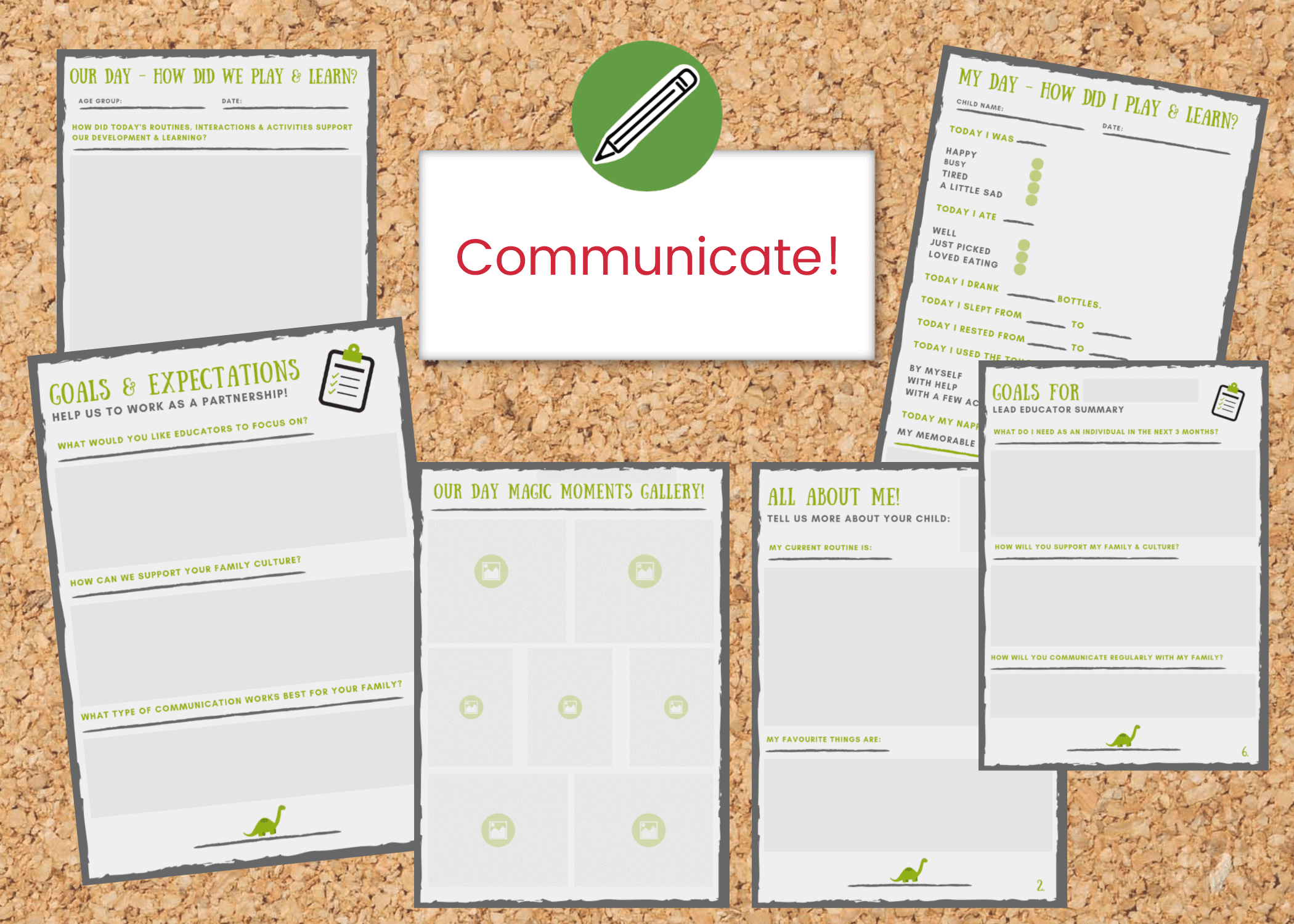
Why do we as educators need to include the child's 'voice'?
and school-aged children’s voices including:
However, as you will be aware many of these suggestions stem from verbal interactions and I can now hear you rightly pointing out to me that babies don’t speak and toddlers usually aren’t having lengthy conversations using words you understand!
And since this post is about how to plan effectively for the younger age group I’m going to go ahead and give you some additional ideas for hearing the child’s voice when they don’t yet speak or do much more than feed, drink, sleep or poop! (Oh what a dream that would be, right?!!!)
So how do we incorporate the child's voice Jodie when they don't yet speak?
As I mentioned right at the beginning of this series - you think outside the box and focus instead on those everyday interactions and routines we have been talking about all the way through this article! That is why I encourage educators working with babies and younger toddlers to take a little extra time to set up their family communication tools, environments, individual routines and how they get to know more about children in their care.There was a reason I was giving you all those ideas and tips you know!!
Using those tools and systems you have previously set up after starting this series, try one of the following strategies to help you further engage with babies and toddlers in meaningful ways.
Baby & Toddler Voices

Use the discussions and information you gather from families regularly to help you include children's voices into your program consistently .”
- The Empowered Educator
As toddlers begin to use their emerging language and physical skills more in interactions, you can respond by providing the experiences, materials, environments and collaborative conversations that provide toddlers with the opportunity to express themselves in various ways. The information then provides you as an educator with a valuable strategy for using the ‘child's voice' to inform your planning and programming and help you extend on interests, strengths, emerging skills and unique qualities.
Babies may not yet be able to talk or show you obvious 'meaningful moments' you
can use to write up your fabulous WOW moment observation, but they still have a 'voice' to share if you know how to listen and read the subtle clues, then respond to those regularly as part of an ongoing planning cycle for both individuals and groups.
Phew you made it! We are reaching the end of this Baby & Toddler Planning and Play Series but before I finish I want to give you some simple next steps you can try to ensure you take action on making your programming for the 0-2 years age group easier. Ready? Let's do this now Empowered Ed!
6 Easy Action Steps Educators can do right now to Simplify Your Programming System for Babies & Toddlers.
01 Variety is Key!
Decide on the observation formats you would like to use. Remember that you can use a variety of different sources and tools to collect information via your observation. See my suggestions in Part 2 for more ideas or if you are a current subscriber to the Empowered Educator Member Hub try out some of the different checklists and templates.
02 Step up your Family Communication!
Develop and trial those family communication tools and systems – no excuses!! Think about how you could utilise orientation visits, morning and afternoon drop off / pickups, family events etc.
03 Organise Hard Copy & Computer
Set up individual folders for each child in hard copy folders or on the computer. If you struggle to understand and use computers or devices for your programming and you are a subscriber to Member Hub you might want to take a look at my Computer Basics for Planning & Organisation Video Series on your toolbox videos page when next logged in.
04 Tweak your Environments
Set up your environments indoors and outdoors to encourage playful learning and support the children's strength's and interests. If YOU need some guidance and photo inspiration on setting up welcoming learning spaces for babies and younger toddlers read through this post.
05 Link it Together
Ensure you have a system or tool that allows you to easily link all of your assessment and documentation together to show each child's progress on their individual learning journey. Read more about creating a planning system that works to your strengths here.
06 Keep it Straightforward!
Map out how you could meet the planning cycle steps then decide what formats and tools you will use to make it work for you and ensure you aren't doubling up on writing. Keep it Simple!
Hopefully, you are able to see how knowing and understanding a child's usual behaviour, mannerisms,nurturing requirements and general reactions to certain parts of the daily routine actually helps you as an educator to observe and analyse meaningful behaviour. It doesn't always mean having to wait for a major developmental event like rolling over or something 'special'.
They don’t ‘do the same thing or nothing interesting' each day. You just need the tools to help you recognise and respond to the cues as they occur and to be aware of any unrealistic expectations creeping in that can cause unnecessary pressure and confusion when it comes to planning for children under 2 years.
The planning and documentation cycle doesn't need to be confusing just because you are working with a younger age group - you just need to modify the way you collect your information to inform your planning and close the loop!
How to look forward and close the planning cycle loop.

Make sure to use the valuable information you have been collecting from all of your observations, analysis of learning, family communication, everyday nurturing moments and routines along with your reflections and the other ideas I have shared with you over this 3 part series to ensure you are able to now close the loop on your planning cycle before the next cycle evolves using the continuous stream of new knowledge you are now recording using your individually tailored simple documentation and assessment steps.
Reflection Prompts to guide educators through the planning cycle steps.
I use a forward planning form to link everything together quickly and I’ve created one especially for educators working with the 0-2 years age group (or babies in a mixed age environment in FDC) that also includes the templates in the images above. You will find it HERE.
If you would like to read more about how I use my forward planning template you can do that here.
As this 3 part series draws to a close I hope the information has helped you as an early childhood educator to program for this age group with less writing and feelings of overwhelm while at the same time offered more meaningful and effective support for the children and carers present in your early years service.
This series has all of the information you need to simplify planning for babies and help you take meaningful action without writing more!
You Can Do This Empowered Ed!

A Little About Me
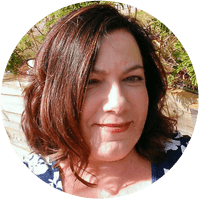
Jodie Clarke is an early childhood professional supporting educators who want and need to stay passionate about the work they do! She has 30 years hands-on experience in the early childhood and human services sectors across many different roles.
Jodie is mum to 3 in Australia and has already helped thousands of educators with their work through her popular blog posts, activity ideas, online training and e-books.


Hi Jodie,
My name is Delma and I am passionate about working with children. I am so inspired about your work and would like to have more resources especially around recording children’s voice and the different observation formats and activity ideas for toddlers and babies.
Regards,
Delma